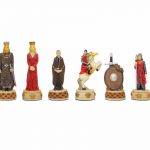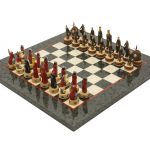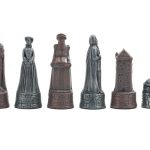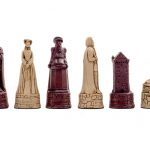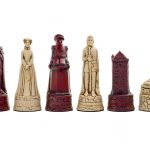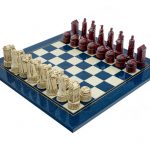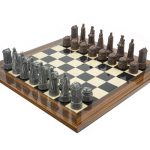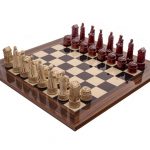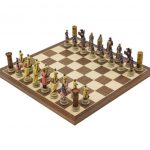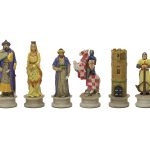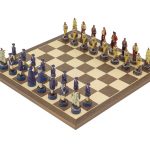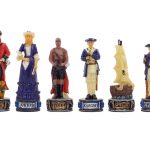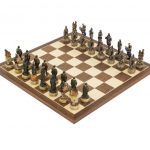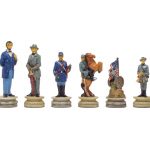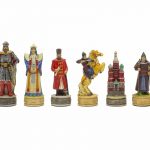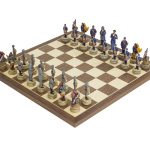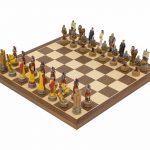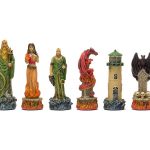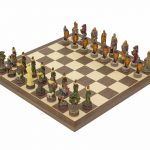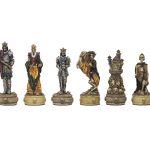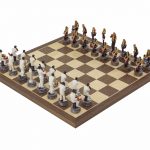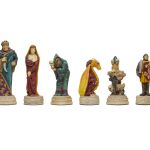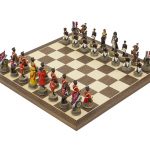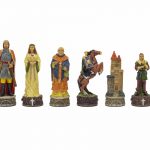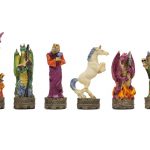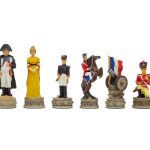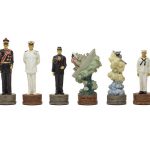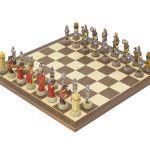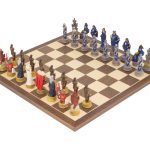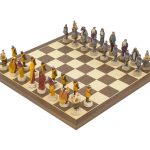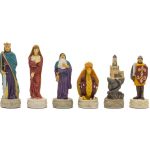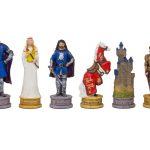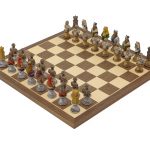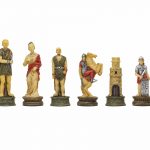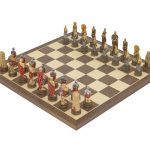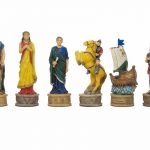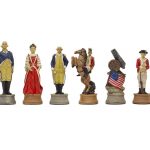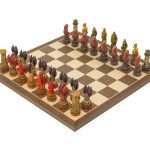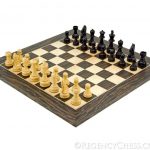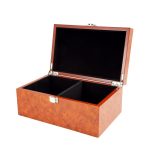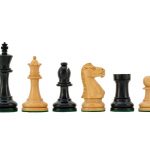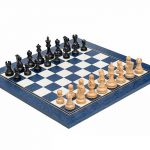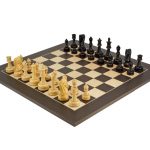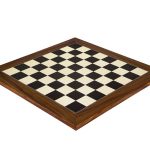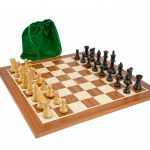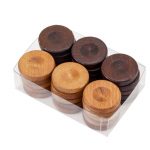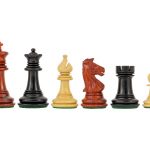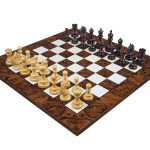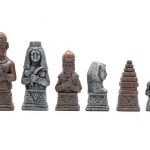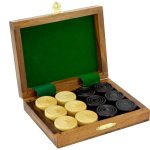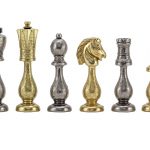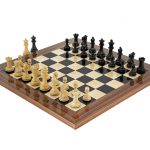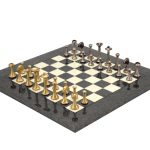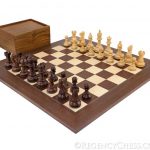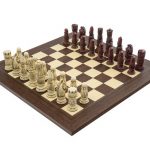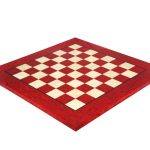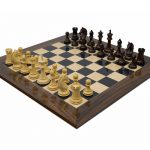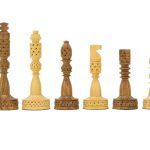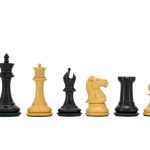Disclosure : This site contains affiliate links to products. We may receive a commission for purchases made through these links.
The England Vs Scotland Hand painted themed Chess set by Italfama
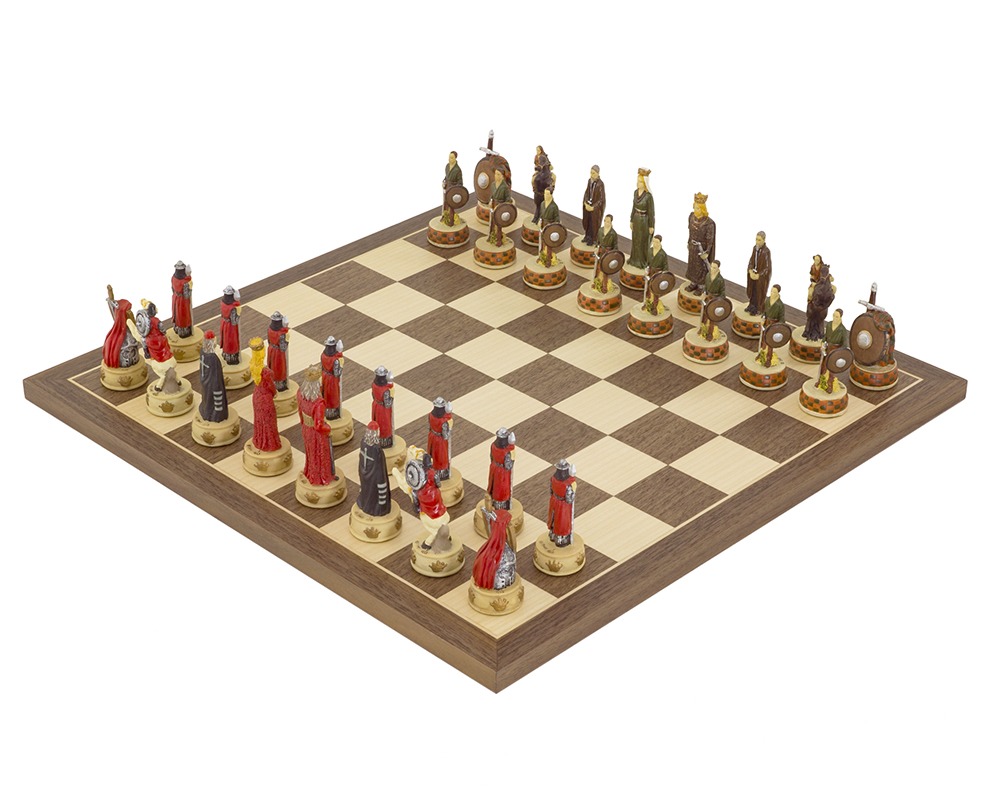
Beautifully crafted in Italy. Exquisitely ornate. 3 inch king. Felted bases. Presented on a 16 inch board. THE PIECES Over the centuries, there have been many battles between England and Scotland and two figures that stand out in this history are William Wallace – Guardian of Scotland and Edward I – King of England. We are currently uncertain as to which historical persons are portrayed by these lovely chess men, so we will base them on these two historical figures. However, if any of our customers can positively identify these characters, we would certainly welcome the information and update our listing accordingly. With the exception that the English are donned in traditional red garments and the Scottish in their green and brown based garments, the armies are then made up of similar looking characters. Both kings bear a thick set crown atop long flowing hair. Majestically, they stand poised with their swords, looking every inch the regal leader with their beautiful queens standing supportively by their sides. The bishops look on with a knowing and educated demeanour whilst the knights look fierce with their mounts rearing up in readiness for battle. The rook has a dramatic sword and shield combination and smartly dressed pawns on both sides are ready to take orders from their king. The battlefield today is a stunning 16 inch walnut and maple high quality board made by the famous Rechapados Ferrer in Spain. The England vs Scotland Chess Men are also available without the board, but either way this is a perfect gift for any history or chess enthusiast. THE HISTORY The First War of Scottish Independence began in earnest with England’s brutal capture of Berwick, in March 1296. This was followed by the Scottish defeat at Dunbar and John Balliol’s abdication in July. By August, the English invasion campaign had subdued most of the country and, after taking the Stone of Destiny from Scone and for installation in Westminster Abbey, Edward called a parliament in Berwick. Finally the Scottish nobles paid homage to him as King of England. In early 1297, however, revolts broke out and those were led by Williams Wallace, Andrew de Moray. This pressured Edward to send more forces to deal with the Scots and although they managed to coerce the nobles into submission at Irvine, Wallace and de Moray’s continuing battle campaigns eventually led to the first key Scottish victory, at Stirling Bridge. Moray was fatally wounded in this battle and unfortunately died soon after. Scottish raids continued into northern England and Wallace was appointed as Guardian of Scotland in March 1298. In July, Edward invaded again, intending to crush Wallace and his armies and eventually defeated the Scots at Falkirk on 22nd July 1298. Wallace was eventually captured in Robroyston in August 1305, handed over to Edward and executed for high treason and crimes against English civilians. After the capture and execution of Wallace, Scotland seemed to have been finally conquered and the revolt calmed for a period.








